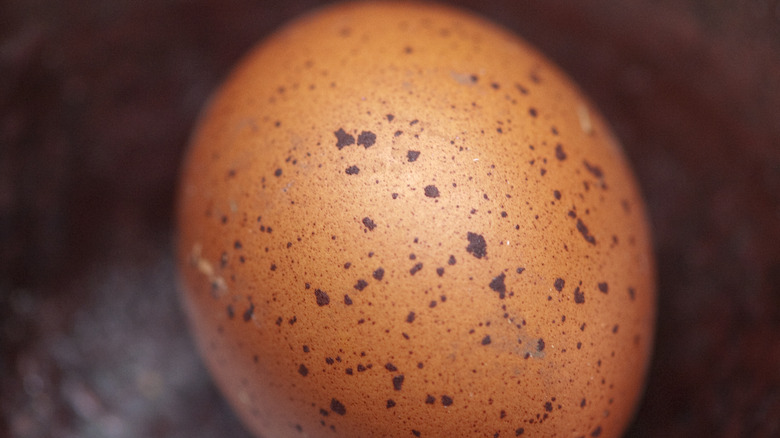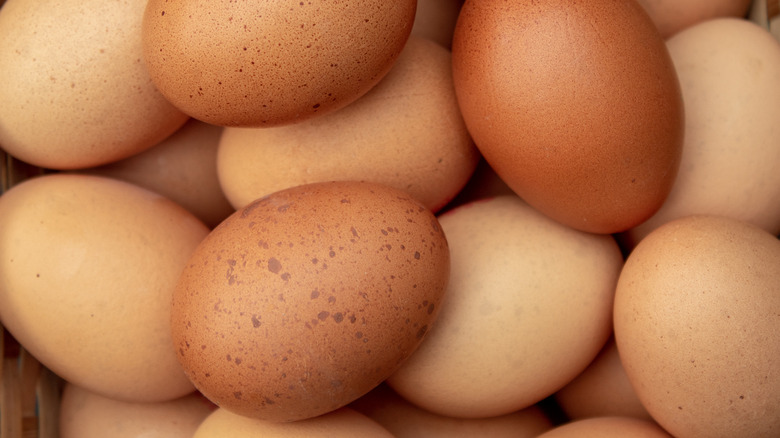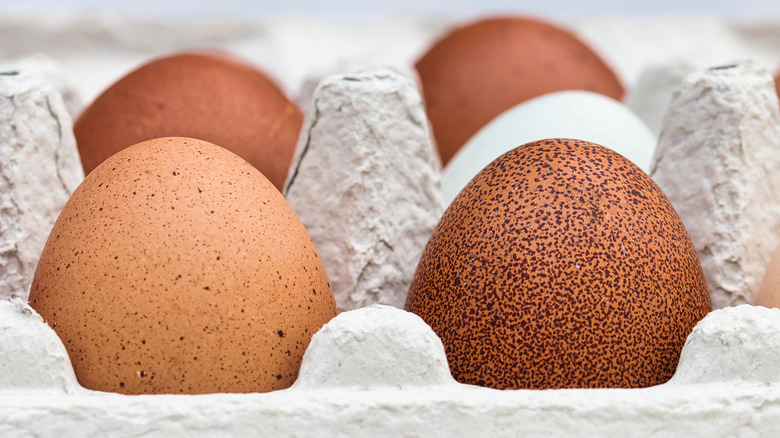What Does It Mean When Your Eggs Are Spotted Or Bumpy?
When you think of eggs, you probably imagine smooth, evenly colored shells in perfect oval shapes; but, sometimes, eggs come in speckled colors and even have bumps on them, creating an uneven surface or small protrusions on the shell. Speckled eggs are often smoother than bumpy eggs, but they aren't a solid color. These eggs have speckled or dotted patterns on their shells in various colors, including brown, black, gray, blue, green, and red. These colors create delicate, intricate patterns that adorn the smooth shells of the eggs, creating a wonderful mosaic of colors.
These bumps and speckles can be jarring to see if you expect to see regular, smooth, even-colored eggs from the grocery store, but they can also be quite interesting and even beautiful to look at. However, you may be wondering what caused these imperfections, if the eggs are of good quality, or if they are good to eat at all.
Bumpy eggs and what it means
If you find an egg with bumps on the shell, you don't have to throw it away. Bumps on eggs are often caused by a condition known as "calcium spots." Calcium spots occur when there is an excess of calcium in the hen's diet or if the hen is unable to process the calcium properly. This can cause the excess calcium to be deposited in the eggshell, resulting in bumps or raised areas. This happens in the oviduct as the egg passes through the hen. Calcium spots are harmless and do not affect the safety or quality of the egg.
However, bumps on eggs can also be caused by other factors such as infections, genetic mutations, or even damage to the eggshell during production or transportation. If your eggs are bumpy because of any of these factors, they will not be good to eat, but the best way to tell if your egg is good or bad is to crack it open. If there are spots inside the shell, a bad odor, or a cloudy yolk, you should not eat the egg (per Reader's Digest).
Spotted eggs and what it means
But what about speckled eggs? Some chicken eggs are speckled, spotted, or discolored because of genetics, but the environment can also play a role in their appearance. For example, too much calcium in a hen's diet can result in speckled eggs. If the egg spins too slowly as it leaves the hen's oviduct, that can cause speckling or spots on the shell. If a hen's shell gland is defective, or even if the chicken house is disturbed while the egg calcifies, the result could be a discolored appearance on the egg's shell.
Speckled eggs are a natural variation that happens more than you may realize, and these eggs are still safe to eat. The speckling does not negatively affect the quality of the egg. However, if you want to be sure the egg is still good, you should crack the egg and look for imperfections inside the shell or on the egg whites or yolk.


